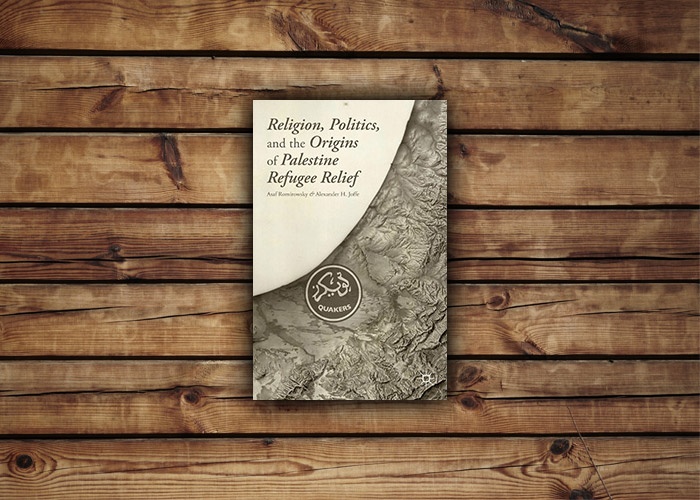Although this book came out several years ago, it remains pertinent. This is a meticulously researched book that concentrates on a very small bit of history: the time period from 1948-50 when the American Friends Service Committee, a Quaker group, was organizing refugee relief in Gaza.
Before UNRWA, the UN created the United Nations Relief for Palestine Refugees (UNRPR). It outsourced refugee relief to three other groups: the International Committee of the Red Cross, the League of Red Cross Societies, and the AFSC, which had won accolades for its non-political relief activities during the 1930s and 1940s.
The AFSC was in charge of relief for some 200,000 refugees in Gaza. Even though it was not fully successful in keeping itself above the fray of Middle East politics, it did an admirable job with very few resources in providing food, medical care and even education to this huge population that fled Israel. In fact, the 25,000 native Gazans were in worse financial shape than their 200,000 forced guests.
The AFSC initially wanted the refugees to be repatriated to Israel, but eventually it accepted that the majority would have to be resettled in Arab countries. Of course, the Arab countries did not want to settle them.
The AFSC is interesting in a number of ways. The Quakers, alone among the UNRPR NGOs, actually tried and to a large extent succeeded in performing a census of the refugee population, foiling the elaborate schemes that the Arabs used to inflate the numbers of members of their families (sending kids from one home to another to be counted multiple times, not registering deaths, and so forth) in order to maintain a fair and equitable distribution system. Even so, they allowed some additional food parcels to be distributed, as the food rations created a mini-industry of trade in the camps.
An AFSC member realized early on that some 200,000 of the then-assumed 670,000-700,000 refugees were not refugees at all, having lived on the other side of the Green Line the entire time, but they applied for refugee relief to take advantage of the free food.
The group also emphatically did not want to be stuck in the Middle East forever. They set a deadline by which they would leave, and UNRWA exists partially because of that ultimatum. The AFSC was keenly aware of the facts that the refugees themselves did not want to resettle at that time, and their desire to “return” was predicated on Israel being destroyed first. The refugees also felt that the aid that they were receiving was their right, and they blamed the UN as being responsible for their homelessness and therefore responsible to house and feed them until they return victoriously to their homes.
The AFSC quickly realized that this was a quagmire that they did not want any part of. The AFSC noted, prophetically, that withdrawing aid is actually the best thing that could happen to the refugees as the alternative of perpetual aid “contributes to the moral degeneration of the refugees and may also, by its palliative effects, militate against a swift political settlement of the problem.”
As they left and handed over the reins of Gaza relief to UNRWA, the FSC members naively thought that now a professional organization would be able to do things that they could not — but they quickly realized that UNRWA officials were completely incompetent and often political hires who thought that the assignment was to drink scotch all day with Egyptian officials.
For a short time the AFSC was an UNRWA contractor to help the transition. One mentioned in a letter that the Egyptians had taken over the education of the Palestinian children under UNRWA in 1950, where “the kids are learning reading, writing and bombing tactics.”
The AFSC is also, as the authors point out, a precursor to today’s powerful and very political NGOs. The Committee itself became very political in the decades since, taking on US involvement in Vietnam and the Cold War, and in recent decades they became implacably anti-Israel, which some but not all of their volunteers were in 1948.
The book is dense with facts and footnotes, and it is often difficult to keep track of all the players. It places the AFSC in context of the many American, mostly Protestant groups with ties to the Middle East, whose members were often antisemitic (and many of whom ended up working for the State Department.) But it tells a story that simply had not been previously told about the history of the refugee problem and how it turned from something that might have been solvable into today’s intractable problem of descendants of the original refugees still stateless, still pawns and still believing that they are entitled to free food, medicine and education forever.


























